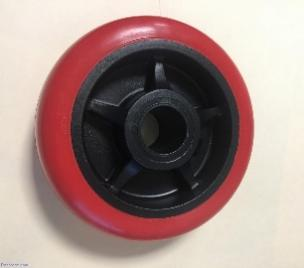Jul. 04, 2025
Controlling injection molding process parameters is the key to producing high-quality plastic parts with consistency and efficiency. From melt temperature and injection pressure to cooling time and screw speed, each parameter directly influences product accuracy, surface finish, and cycle time. By understanding how to monitor and fine-tune these variables, manufacturers can minimize defects, reduce material waste, and improve overall productivity in the molding process.
Injection pressure
Injection pressure is a critical parameter in injection molding, which directly affects the flow behavior of the plastic melt and the molding quality of the final product.
Injection pressure:
Injection pressure is the main force that drives the melt to fill the mold cavity. According to the International Plastics Industry Association, appropriate injection pressure can ensure that the melt fills every corner of the mold smoothly and reduces the generation of short shots and bubbles. Too high or too low injection pressure may lead to product defects. Generally speaking, the injection pressure ranges from 70-140MPa, and the specific value needs to be adjusted according to the type of plastic and product structure.
Holding pressure:
Holding pressure is the pressure that continues to be applied to the melt after the melt fills the mold to compensate for the cooling shrinkage of the plastic. The holding pressure is usually set to 60%-80% of the injection pressure to ensure that the plastic does not shrink excessively during the cooling process. Optimization of holding pressure can reduce product shrinkage by about 5%-10% and improve dimensional stability.

Back pressure:
Back pressure is the pressure that needs to be overcome when the screw retreats during the plasticization process. Appropriate back pressure can improve the mixing uniformity of the melt, reduce the generation of bubbles, and increase the density of the melt. The back pressure is generally set between 5% and 15% of the injection pressure, and the specific value needs to be adjusted according to the type of plastic and the performance of the injection molding machine.
Injection time
The injection time includes injection time and holding time. These two parameters have an important impact on the molding quality of the product.
Injection time: Injection time refers to the time required for the plastic melt to fill the cavity. It plays an important role in the pressure control of the gate, runner and cavity. Reasonable injection time helps the melt to fill ideally, improve the surface quality of the product and reduce the dimensional tolerance. The injection time is generally 1/10 to 1/15 of the cooling time. This rule can be used as a basis for predicting the total molding time of plastic parts.
Holding time: The holding time is the duration of the holding stage, which plays an important role in reducing the shrinkage and internal stress of the product. The length of the holding time depends on the thermal properties of the plastic and the thickness of the product. Too short a holding time may cause excessive internal stress in the product, while too long a holding time may extend the production cycle and reduce efficiency. Optimizing the holding time can improve the dimensional stability of the product by about 8%-12%.
Injection temperature
Injection temperature is an important factor affecting injection pressure and product quality and must be controlled within a reasonable range.
Barrel temperature: Barrel temperature refers to the heating temperature of the barrel surface, which is generally heated in three stages, gradually increasing from the hopper mouth to the nozzle. The barrel temperature must be set to ensure that the plastic particles can be completely melted without decomposing due to overheating. For example, the melting point of polypropylene (PP) is about 160-170°C, while the melting point of polyester (PET) is as high as 260-270°C.
Mold temperature: Mold temperature refers to the surface temperature of the mold cavity in contact with the product, which has a great influence on the appearance quality and performance of plastic products processed by precision injection molding. The setting of mold temperature is often determined by the size and structure of the plastic product, the characteristics of the plastic material, and the process conditions of the plastic product. Controlling the mold temperature can cool the plastic molded products and provide conditions for smooth demolding; at the same time, controlling the mold temperature can make the temperature of each part of the mold cavity balanced and consistent, so as to avoid the degradation of product performance due to the generation of internal stress and ensure the quality of the product.
Previous: Why Servo Motor Cores Are Key to High-Performance Automation
Next: None
If you are interested in sending in a Guest Blogger Submission,welcome to write for us!
All Comments ( 0 )